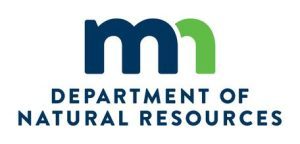Wetland Status and Trends Monitoring Report
summarizes 15 years of data
Minnesota has had a net gain of approximately 43,000 acres of wetland in 2006-2020 — that’s one of the critical findings of the Wetland Status and Trends Monitoring Report released today by the Minnesota Department of Natural Resources.
The report also shows that most of the wetland gain was realized in the last six years of the 15-year (2006-2020) monitoring period. Most gains are in emergent wetlands in agricultural areas that tend to occur after periods of higher precipitation. Emergent wetlands are found in regions that transition between dry and wet and include rooted upright plants common to moist environments.
“The Wetland Status and Trends Monitoring Report provides an update on how well Minnesota is doing with the state’s Wetland Conservation Act (bwsr.state.mn.us/wca-program-reports) goal of no net loss of wetland quantity, which was developed in part in response to historical losses of wetlands in Minnesota,” DNR Wetland Research Scientist Amy Kendig said. “The report shows we’ve had small net gains, and wetland losses have declined over time.”
“Despite recent federal wetland protection reductions, Minnesota maintains robust state wetland protections,” DNR Ecological and Water Resources Division Director Katie Smith said. “Results from this monitoring show that Minnesota’s wetland protections are working.”
To monitor wetlands, the DNR collects aerial imagery of 3,750 one-square-mile plots and then analyzes how much wetland area has been gained or lost, the drivers of gains or losses, and whether wetland types are changing. Plots are monitored and analyzed on three-year cycles.
Precipitation is a well-known driver of wetland dynamics. Minnesota and many other states have experienced more frequent and extreme rain events and droughts as the climate changes. Precipitation in Minnesota has increased by an average of 3.4 inches between 1895 and 2020, which helps explain the observed wetland expansion. Severe drought in much of the state over the past three years will be included in the 2021-2023 monitoring results, which will be released about a year from now.
Wetlands serve essential functions, including climate change mitigation, erosion control, floodwater storage, groundwater recharge and discharge, water quality improvement, habitat for rare species, and supporting recreational and economic benefits.
The report and more information about wetland status and trends monitoring are available on the DNR website (mndnr.gov/wetlands/monitoring.html). More information about wetlands, their benefits, and how to conserve them is also available on the DNR website (mndnr.gov/wetlands).

Tags:



